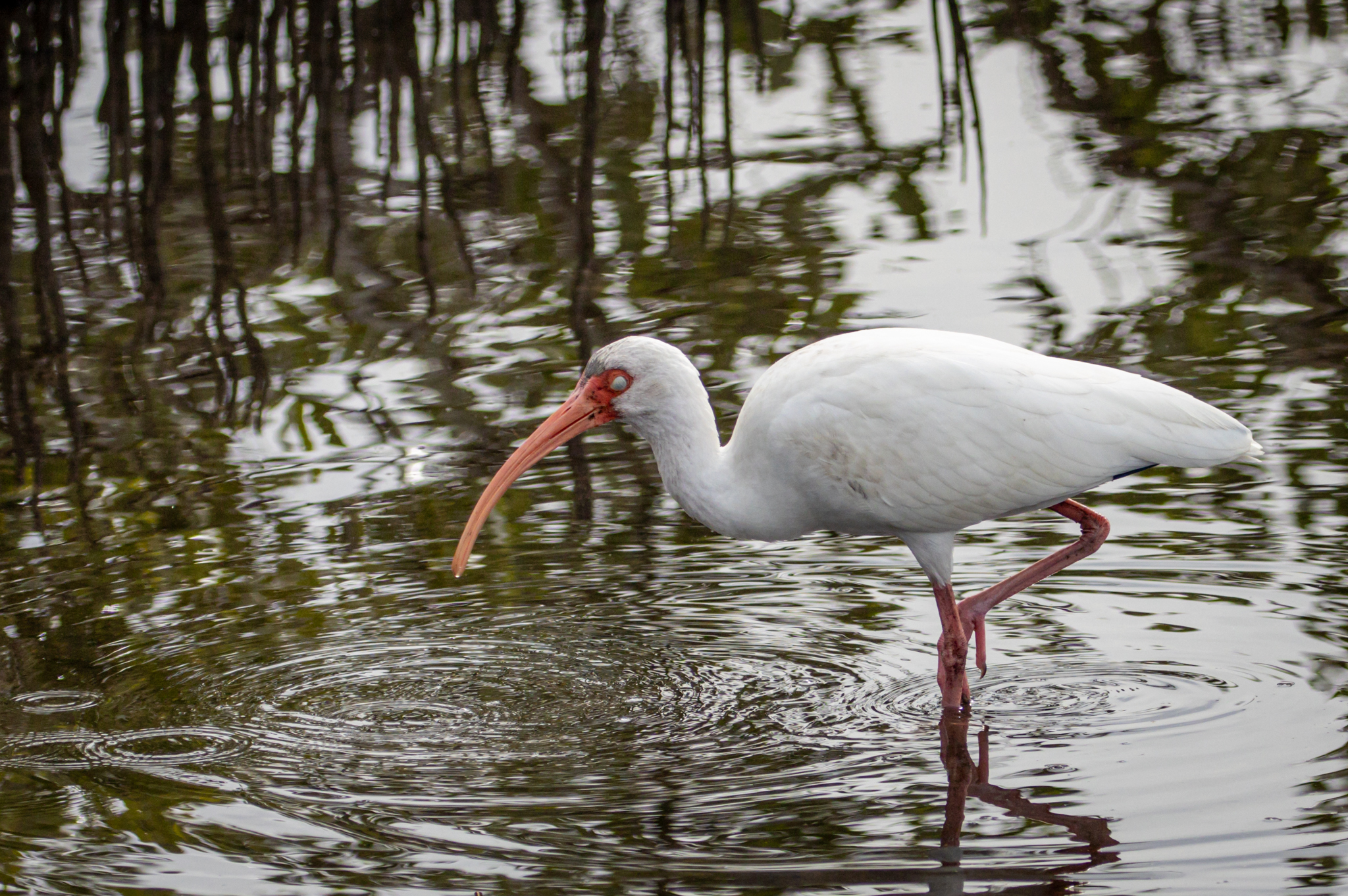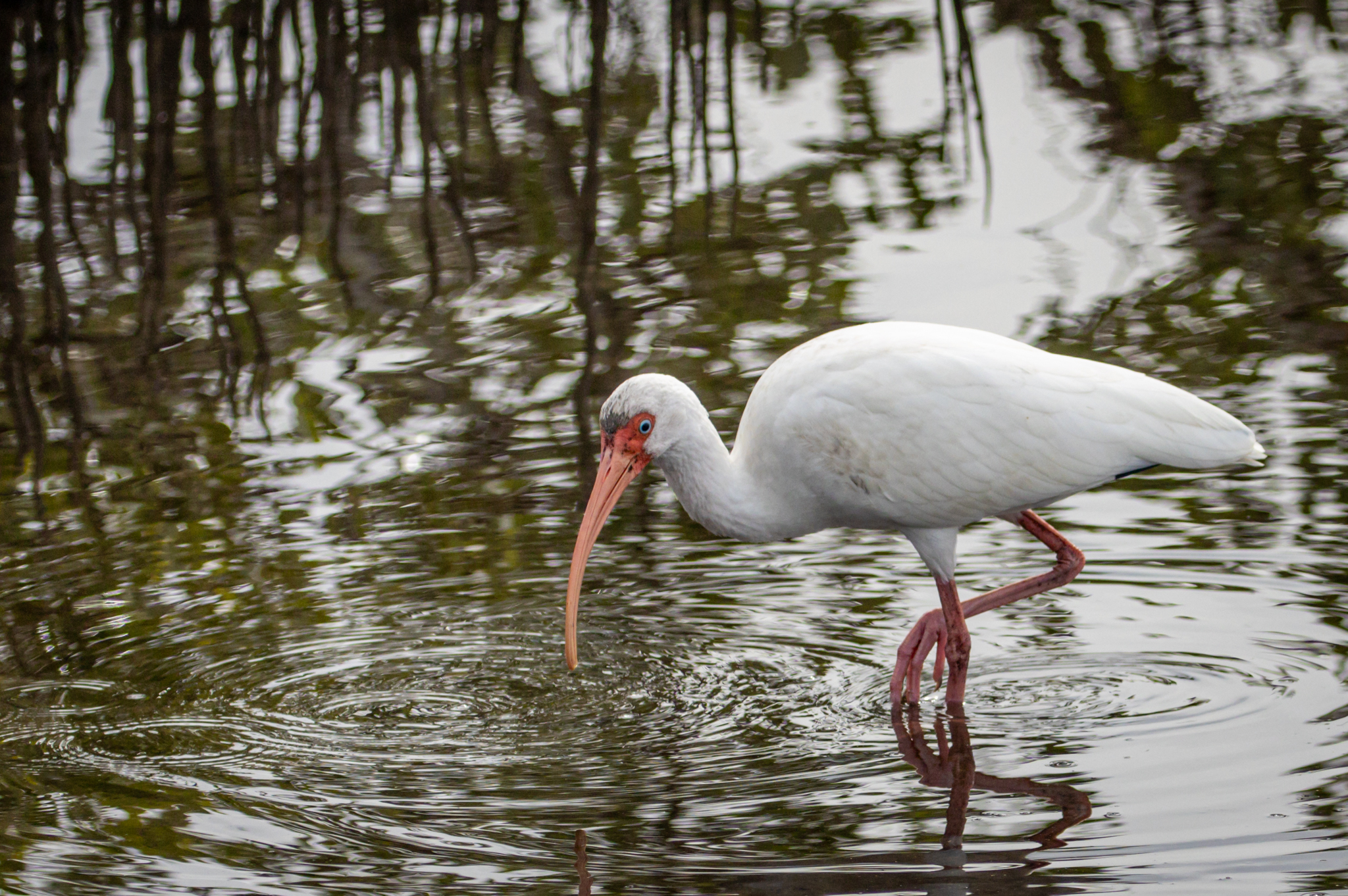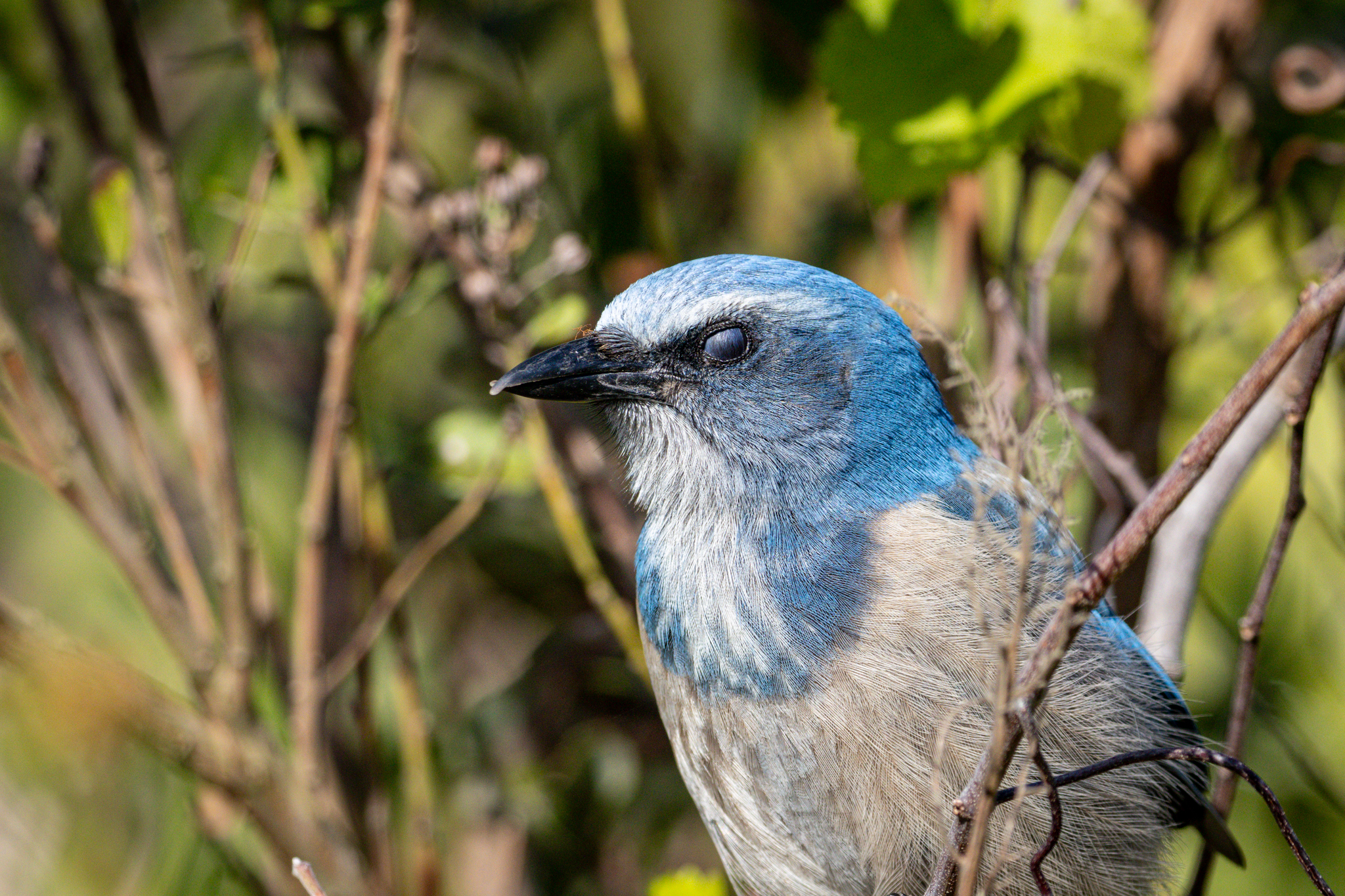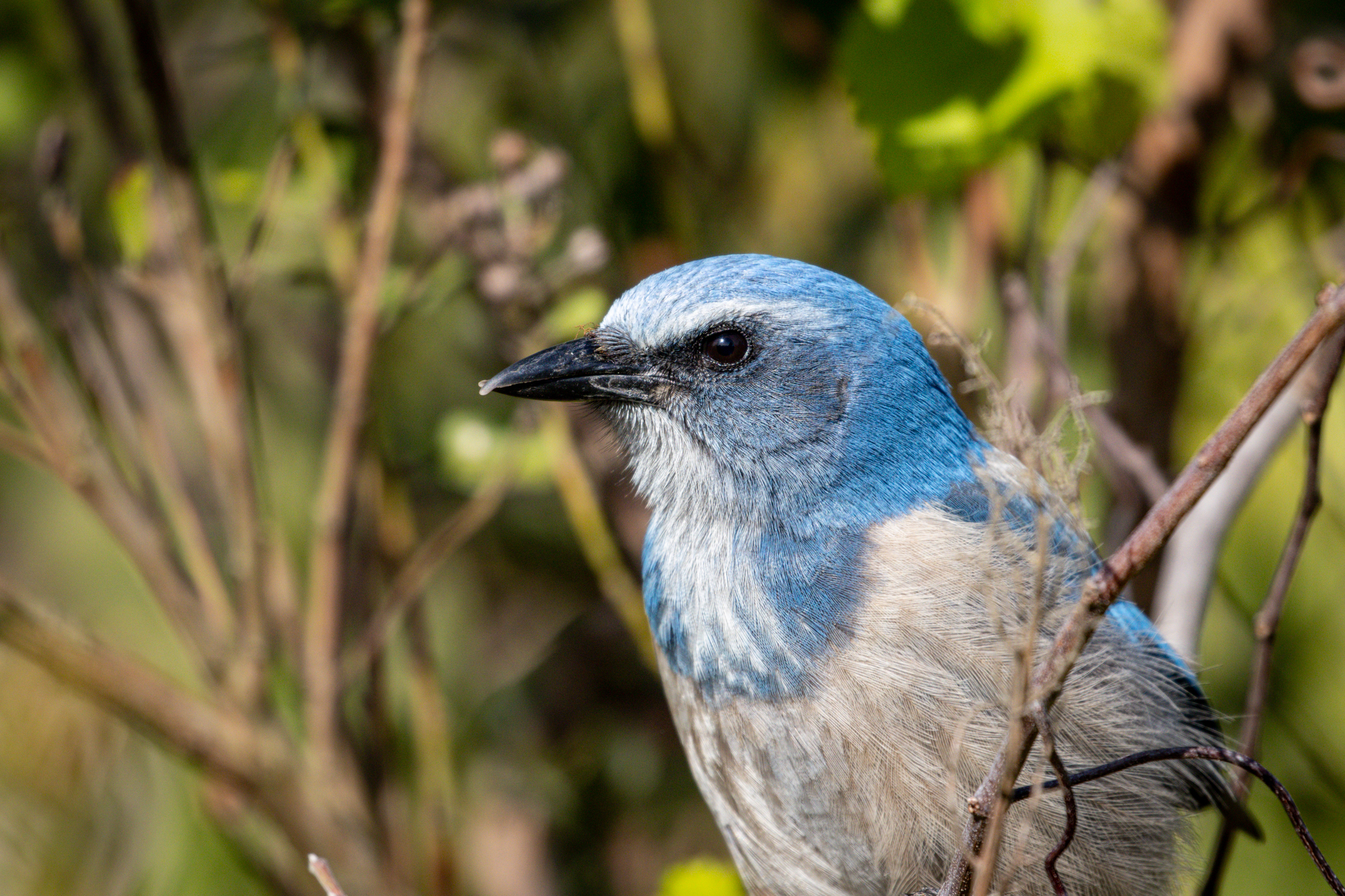Birds (as well as reptiles, amphibians, and fish) have a nictitating membrane, a second or third eyelid that is used to protect and moisturize the eye. In birds the nictitating membrane moves horizontally across the eye starting at the inside of the eye and moving across to the outside. Just like taking a family photograph and catching someone blinking their eyes, sometimes you take a bird’s photograph and catch the nictitating membrane just when it has the eye covered. If you take a lot of bird pictures you’ve probably captured some like the ones below, taken while we were in Florida.
The White Ibis is a common bird in Florida and groups of them are found plunging their curved reddish bills into the ground or water in search of food. Here’s a shot of one with and without the nictitating membrane.
The Florida Scrub Jay is an endangered species found only in Florida. A friendly Floridian birder told us about a spot where we could find them (more about that experience later). Here you can see a shot of one with and without its nictitating membrane covering its eye.
More than a novelty than anything else, shots with a nictitating membrane still tickle me – you just can’t see it with the naked eye. How many shots do you have of birds with a nictitating blink of an eye?
If you enjoy seeing beautiful pictures of birds from around the world and reading about them Click Here to sign up for our mailing list. Members can post their own GreatBirdPics and learn more about bird photography techniques.



